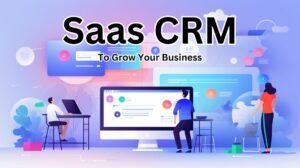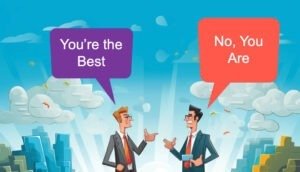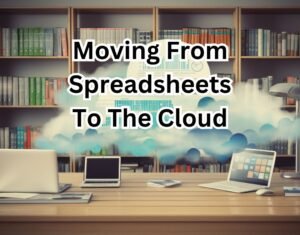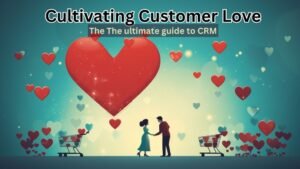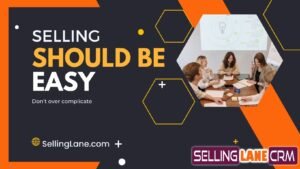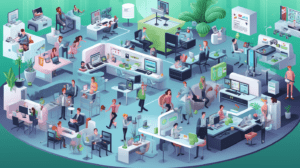7 Crazy Reasons NOT to Have A Business Website
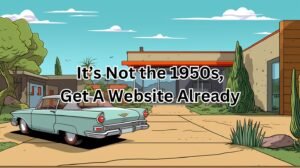
In today’s tech-savvy world, having a company without a business website can be like driving out of state without directions. While some businesses manage to carve out a niche without an online presence, there are unseen hurdles that might be slowing them down. And quite frankly, the reasons for not having a business website are diminishing every year, especially with companies like Selling Lane offering free websites with their CRM small business software
It’s not the 1950s, where relationships were built at parties and toasters were your only appliance. To compete today, you have to have a Business website, so you can still have those parties and let your business grow online while you’re chatting with friends.
Still not convinced? Let’s explore some of the challenges you might face when you don’t have a website to showcase your offerings.
1. Not having a Business Website, is Like Being Invisible in the Online World

Imagine a customer searching for a product or service you offer, but they can’t find you online, so, they shop your competitor instead. In the absence of a business website, companies miss out on a massive pool of potential customers who scour the internet for their needs. Your business becomes a hidden gem that only a few local customers might know about, while a vast ocean of potential remains unexplored.
2. You Cannot Depend on Referrals in a World with Diminishing Loyalty.
As the years go by, depending solely on referrals is becoming problematic, as customers become less loyal. And I don’t mean to be cruel when I say this, but your older clients are dying off.
When General Motors use the line, this is not your father’s Oldsmobile. They were not wrong because they were noticing a trend where younger clients were not buying Oldsmobile anymore. The result, they no longer exists because they were too slow to evolve with the times.
3. Your Credibility will Take a Hit without a Business Website
When consumers hear about a business, one of the first things they do is check it out online, look at ratings, and then make the decision to call or fill in a form. A well-designed website is often seen as a credibility marker, just like having a clean showroom or when you pull up to a job site with a new truck.
Without a website, potential customers might question the legitimacy of your business, wondering why it lacks an online presence in a digitally dominated era. When they hop on your site and see customer testimonials and product listings, along with smiling staff members, they will want to do business with you.
4. Communication Gaps and Google Business Listings

Your Business Website serve as a 24/7 communication channel between your business and potential customers. Without it, you miss out on an opportunity to communicate your offerings, values, and stories to a wider audience. Customers might struggle to find essential information like your contact details, operating hours, and services, which can lead to missed business opportunities.
Even if they go to your Google Business Listings or Google Maps, many times the very next step is for your potential customer to click on the business website listing and see your offerings. So, if you don’t have a business website connected to Google, you just don’t have the credibility your company deserves. We see a time and time again, where older businesses neglect their business website and as a result, their credibility diminishes overtime. If you’re looking to leave a legacy to your children, get your website up-to-date.
5. No Business Website? You’re at a Competitive Disadvantage
While you’re operating without a website, your competitors with an online presence are likely attracting customers that might have chosen you. A business website allows you to showcase your unique selling points, attract potential clients, and compete on a larger scale, both locally and beyond.
Meanwhile, your competitor is getting leads from his site, so it’s working for him even when his business is closed. How does that seem fair?
6. Limited Marketing Opportunities Without an Online Presence
Without a business website, your marketing strategies might be confined to traditional methods, which are often more costly and have a limited reach. For example a simple postcard mailer can cost $100 per thousand mailed with a 1% return on investment, meanwhile the website included with Selling Lane, only costs $6 per user and has on average a 140% return on investment
A website acts as a versatile platform where you can showcase your portfolio, share customer testimonials, and even establish a blog to share your expertise and attract organic traffic.
Organic traffic is customer searches online, for example “Best Driveway Sealers” results in your driveway sealing business coming up on the search. This is critical to your success, because something like 80% of all customers start their decisions, by performing a Google search.
7. You Think a Business Website is too Expensive

In the past, you were correct, because business websites cost thousands and were extremely hard to launch. Now there are free services that offer excellent free sites. Even Selling Lane includes a Free Integrated Business Website in their CRM, so you don’t have to pay at all.
Why is an integrated website so important? Because it allows you to make changes to your software that reflect automatically on your website, so you don’t need two separate teams to manage your business for example, if your sales team decides to make changes to products, those changes reflect on your website instantly. This is exceptionally useful, especially for solopreneurs who are doing everything themselves?
My final thoughts
While traditional business methods have their own charm, your competitors will take advantage of you without a business website. Why give them the opportunity to challenge the business you built?
A website is more than just an online presence; it’s a tool that enhances visibility, credibility, customer interaction, and competitive edge, propelling your business towards broader horizons.
In the context of these challenges, platforms like Selling Lane offer a fantastic solution. Not only does it provide a robust CRM to streamline your business operations, but it also offers a feature to create your own business website, ensuring you sail smoothly through the digital world, reaching customers far and wide. So, why stay invisible when you can shine online?
Selling Lane includes, CRM, Retention, Invoicing, Business Website, Task Manager, QR Code Business Cards and much more.
 Try Free for 31 Days
Try Free for 31 Days





